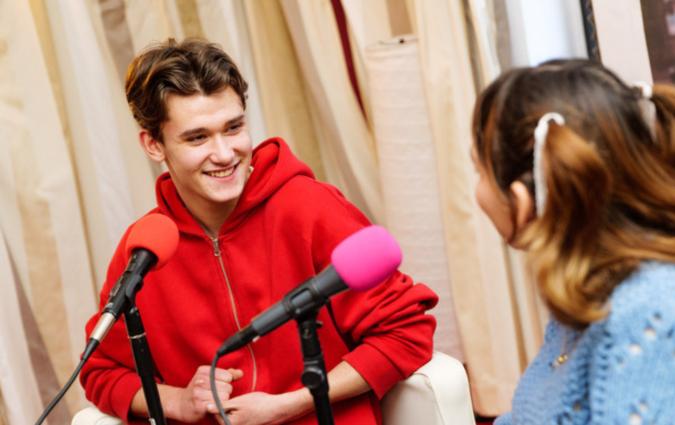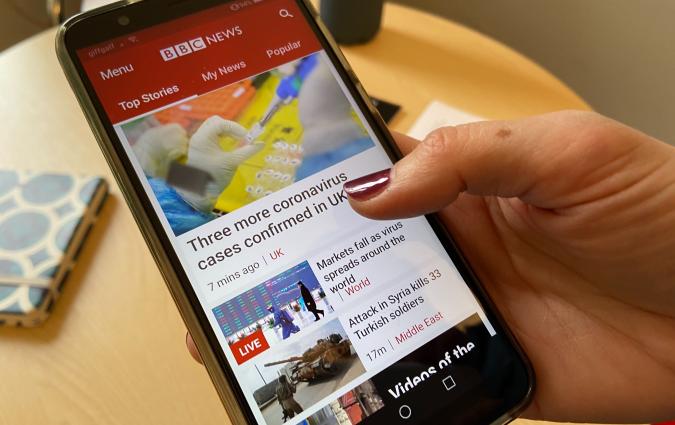Respect users' expectations and four other tips for journalists using TikTok

The speaker
Sophia Smith Galer is a BBC journalist and successful TikTok content creator. She has become an authority on how journalists and news organisations can use TikTok to research stories, reach younger audiences and build relationships. Her seminal work was a radio and TV documentary on how young people were using TikTok in the US election. She was named as one of the Edinburgh TV Festival’s 'Ones to Watch' in 2020.
Why TikTok matters for journalists
TikTok was the world’s most downloaded app in the world in 2020, and it has 800 million active users. Average time on the app roughly doubled last year in many countries, overtaking Facebook’s social media platforms. TikTok is most popular among younger people, meaning more and more news organisations are realising they can use the app to engage with an audience underserved by news. What began as a purely 'fun' app is becoming an online space where news topics are discussed and where outlets can reach new users if they use the right approach.
Sophia's seminar
Five takeaways from Sophia’s talk
TikTok is perfect for multi-platform journalists. TikTok is a natural fit for a growing number of journalists who are working across multiple news programmes and creating content which is repurposed for different formats and platforms. Sophia says that for these journalists, “being on TikTok doesn’t seem remotely novel… it’s just another tentacle of what we do.” Getting your videos optimised for an audience that expects to be entertained the moment the video starts is crucial. “Every second is highly saturated with content. It’s all about making you think and feel with every second of content.”
Journalists can build trust on TikTok (even if they’re not doing journalism). Not all journalists on TikTok are using the platform for strictly journalistic purposes. However, creating content which shows a personal side and what goes on behind the scenes is a great way of building trust in news. Sophia says TV news presenter Megan Mitchell has a great account: “She doesn’t do news gathering and she doesn’t necessarily promote her stories, but she does talk about the reality of being a queer news anchor, something that has gained her a lot of followers. If we’re thinking about how we can build trust with our audiences, that’s something she’s done really well.”
You can still promote your journalism if you respect the TikTok audience. The Washington Post has one of the most successful TikTok accounts of any news organisation and its tone is in step with the expectations of TikTok users. Dave Jorgenson has been given the editorial freedom to run the account and it is full of comic news sketches, often featuring himself. Jorgenson has built a large, engaged follower base which is then receptive to watching more news-based content when it is seems appropriate. “I’m still flummoxed by how many news providers are getting on TikTok and aren’t basically copying Dave. They’re just trying to do what they do on Instagram.”
@washingtonpost The Biden administration will opt into a multilateral effort to distribute vaccines around the world, reversing two decisions by the Trump admin.
♬ original sound - Joe Floww
Working on TikTok could change your life. Sophia says she spends around two to three hours per day using TikTok. From idea creation, to planning stories and engaging with comments and followers, it can be very time-consuming. She has also experienced a loss of privacy and now gets recognised in public. And although comments on TikTok tend to be less abrasive than those on other social media platforms, Sophia still describes as her biggest challenge “the constant sexualisation of my content and the direct messages I get.”
TikTok can help with finding sources and research. TikTok’s algorithm serves up a selection of videos in the For You section based on the content that users have previously have engaged with. Sophia says that when she was researching for her documentary on TikTok’s impact on the US election, she began following and watching videos from various political ‘hype houses’ (teams of TikTok collaborators), and then engaging with the videos and accounts that popped up in her feed. The app feeds you the kind of content you consume. “It’s all through your engagement,” Sophia says.
The bottom line
TikTok is not just another social media platform, Sophia advises. If journalists and news organisations want to use TikTok it’s important to be respectful of the needs and expectations of the audience using the app. However, done well, TikTok can be useful to fine sources, and to reach new audiences and build trust with them.
Find out more
-
How journalists are using TikTok | Poynter
-
Google Sheet with list of journalists' and newsrooms' TikTok accounts | Google Sheets/Francesco Zaffarano
-
Dave Jorgenson on running the Washington's Post's TikTok | What's New in Publishing
-
Beyond Lip-Synching: Experimenting with TikTok Storytelling | Teaching Journalism & Mass Education
-
Sophia's TikTok about TikTok
@sophiasmithgaler Part 1! ? lol that the BBC used my personal tiktoks... ##tiktokuk ##foryou
♬ original sound - Sophia Smith Galer





